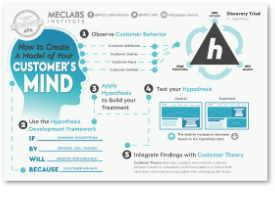The US Supreme Court has ruled that if a company does not have a physical location (a store, office, warehouse, etc.) within a particular state, that state can’t require the company to collect and remit sales tax on customers located in that state. For decades now, many state legislators have floated ideas about changing that law because they “lost” millions of dollars in potential tax revenues.
First, the catalog and TV direct response advertisement industries fought back via associations, such as the Direct Marketing Association and the Electronic Retailers Association. New state taxes were unconstitutional; plus, they placed an unfair requirement on merchants not located in that state. Who wants the burden of bookkeeping and paperwork for different state taxes across the United States?
I’ve actually experienced this first hand because Sherpa has had employees in many different states, and their home offices were considered to be “business premises,” so we had to collect and disburse local taxes for many states. Each had different rates, paperwork styles, red tape and typical errors. It was very much like having to deal with many different versions of the IRS. Can you say “massive pain”?
When the Internet took off, state legislators immediately saw it as a new area of taxation. Early attempts were beaten off by the same logic and by lawyers who stopped states from harassing direct mail and TV merchants. However, as you may know, since June 1, the state of New York began requiring state taxes from all ecommerce sites with affiliates based in New York state.
They’re estimating $50 million to $70 million in taxes per year. The costs, including battling lawsuits filed by such merchants as Amazon.com, not to mention the paperwork involved dealing with thousands of merchants, won’t be negligible.
Key: if this works, and if New York manages to keep and enforce this legislation effectively, you can expect dozens of other states to follow; many might do so in time for the 2008 holiday rush. Who cares about federal law when it’s a recession year? And ecommerce should be bigger than ever this year because of gas prices. Who wants to drive to shop when they can surf at home?
Some merchants, including Overstock.com, are reacting by cutting their affiliates in New York until the law changes. Presumably they did the math and figured the cost of paperwork was greater than the profits they make from accounts brought in by New York affiliates. If the New York law stays on the books, the problem then comes when dozens more states start asking for taxes too. Should Overstock cut affiliates in every state?
According to Sherpa data, ecommerce sites rely on affiliates for roughly 45% of revenue. Although there are tens of thousands of active affiliates in the US, for most, it’s a part-time income. Roughly 1%-2% of affiliates are responsible for the lion’s share of all that merchant income. Will we see merchants begging their most profitable affiliates to move from state to state in order to flee the newly enacted taxes?
I can’t say whether the new law is right or wrong. The world has changed profoundly since federal law was written; now, brick-and-mortar stores are in competition (and cahoots) with websites. It almost doesn’t seem fair that a retailer who has taken the extra risk, expense, and trouble of launching a brick-and-mortar store in my state should have to deal with more tax administration than an Internet retailer should.
However, it also doesn’t seem fair to use affiliates as the loophole to zap taxes through. In my mind, affiliates are icons of the type of entrepreneurialism and clever small business ownership that has made this country great. They are also actual residents of the states in question. How can it be right to crush the livelihood of your own state’s residents to get your hands in the pocket of a business several states away?
If law changes, it should be on a federal level. And affiliates should not be affected.
If you want more info, my friend Shawn Collins at Affiliate Summit Inc. has been tracking the matter closely. He’s also working with colleagues to consider forming an industry association for affiliates. A guy worth knowing.
Affiliate Marketing Blog by Shawn Collins:
http://blog.affiliatetip.com/archives/new-york-affiliate-tax-recap/












